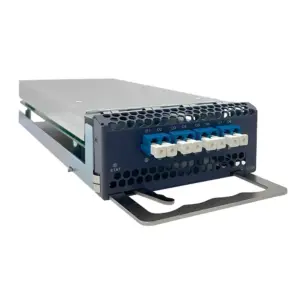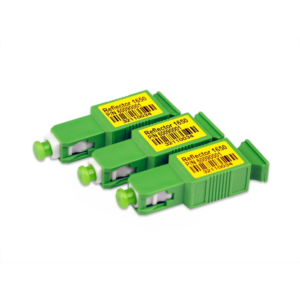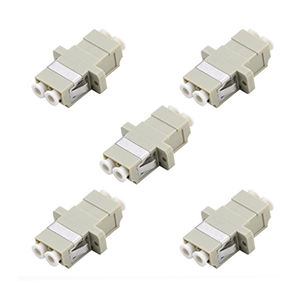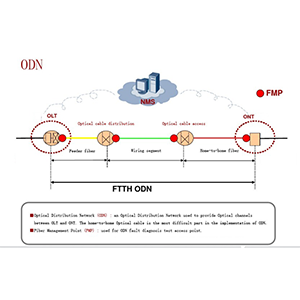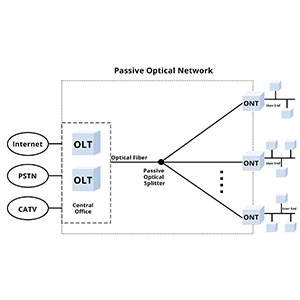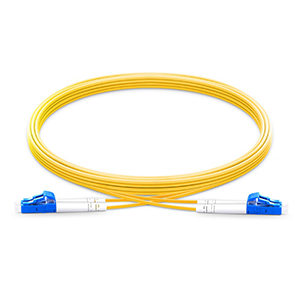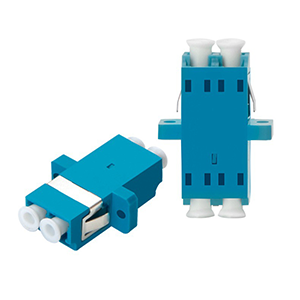Welcome to learn about fiber optic OTDR, a device that plays a key role in fiber optic network maintenance and troubleshooting. Fiber OTDR helps you quickly locate and solve fiber faults by detecting breakpoints, losses, reflections and other issues in fiber links. Let’s take a closer look at this important tool.
Overview of Fiber OTDR
Optical Time Domain Reflectometer (OTDR) is an instrument used to test and diagnose optical fiber links. It evaluates the quality and performance of optical fiber links by sending pulsed light signals into optical fibers and measuring the reflected and scattered signals generated by the optical signals propagating in the optical fiber.
Fiber optic OTDR plays an important role in fiber optic network maintenance and troubleshooting. It can provide critical information to help technicians quickly locate and diagnose problems in fiber optic links and take appropriate measures to repair them. The following are several important roles of fiber optic OTDR in fiber optic networks:
a. Detect breakpoints: Fiber optic OTDR can detect breakpoints in the fiber link, that is, the location where the optical signal is interrupted. By measuring the reflected signal on the fiber, it can determine if there is a break in the fiber, helping to determine the integrity of the fiber.
b. Evaluate loss: Optical fiber OTDR can measure the loss in the optical fiber link, including signal loss caused by connectors, attenuators, splitters, etc. It can provide specific values of loss and indicate the location of the loss, helping technicians determine whether there is excessive signal attenuation.
c. Detect reflections: Fiber optic OTDR can detect reflection problems in fiber links, such as signal reflections and echoes. These reflections can be caused by connectors, attenuators, splitters, etc., and can affect signal quality and performance. By measuring the reflected signal, fiber optic OTDR can determine the location and intensity of the reflection, helping technicians identify and solve reflection problems.
The importance of fiber optic OTDR is that it can provide high-resolution fiber link information and present the results through graphical display or numerical output. In this way, technicians can quickly identify the problem and take appropriate maintenance and repair measures to ensure the normal operation and performance optimization of the fiber optic network.
How Fiber OTDR works
Fiber optic OTDR uses the pulse transmission of light and the collection of reflected signals to evaluate the status of the fiber link. The following is a brief introduction to how fiber optic OTDR works:
Light pulse transmission:
Fiber OTDR sends short pulse optical signals to the optical fiber under test. Typically a narrow pulsed light signal generated by a laser is used, usually at a wavelength of visible or infrared light. This pulsed light signal is injected into the optical fiber and propagates along the fiber.
Collection of reflected signals:
As a light pulse travels through a fiber, it interacts with non-uniformities or defects in the fiber, such as connectors, breaks, attenuators, etc. These interactions cause a portion of the optical signal to be reflected and scattered.
A fiber optic OTDR simultaneously records and measures the time a light pulse is sent, as well as the time and intensity of the received reflected and scattered signals. It uses this information to determine the status of the fiber link.
By measuring reflected and scattered signals:
Fiber optic OTDR evaluates the status of the fiber link based on the time and intensity of reflected and scattered signals transmitted and received by optical pulses. Specifically, it is measured by:
a. Reflections: When the light pulse encounters inhomogeneities or defects in the optical fiber (such as connectors, breaks, etc.), part of the light will be reflected back. Fiber optic OTDR can measure and record the time and intensity of these reflected signals. By analyzing the location and strength of reflected signals, reflection points and reflection strengths in fiber optic links can be determined to identify potential problems.
b. Scattering signal: When the light pulse propagates in the optical fiber, it will scatter with the material structure and impurities of the optical fiber. Fiber optic OTDR can measure and record the timing and intensity of these scattered signals. By analyzing the location and strength of scattered signals, the quality and performance of fiber optic links can be assessed.
Fiber optic OTDR will present these measurement results in the form of graphics or numerical values, allowing technicians to intuitively understand problems in the fiber link and take appropriate maintenance and repair measures.
Application fields of Fiber OTDR
Fiber OTDR is widely used in many fields, including but not limited to the following aspects:
a. Telecommunications field: In telecommunications networks, fiber optic OTDR is used for the installation, maintenance and troubleshooting of fiber optic lines. It can help technicians locate breakpoints, losses, reflections and scattering problems in optical fiber links to ensure the stability and performance of optical fiber networks.
b. Data center: In data centers, fiber optic OTDR is used to monitor and maintain the fiber optic interconnection network within the data center. It can help technicians identify problems in optical fiber links, such as signal attenuation, connector damage, etc., and take timely measures to ensure high availability and reliability of the data center.
c. Enterprise network: In enterprise networks, optical fiber OTDR is used for testing and troubleshooting optical fiber cabling. It can help technicians find fault points in optical fiber links, such as breakpoints, damaged connectors, etc., and perform corresponding repairs and maintenance to ensure the normal operation and reliability of the enterprise network.
d. Public utilities and transportation fields: Optical fiber OTDR is also widely used in public utilities and transportation fields, such as power communications, highway communications, etc. It can be used to monitor and maintain fiber optic communication networks to ensure the normal operation and security of critical infrastructure.
Fiber OTDR actual case:
A practical case is that in the optical fiber network of a large telecommunications operator, users complained about unstable fiber link quality. Technicians use fiber optic OTDRs to test and diagnose this fiber optic link. Through fiber OTDR measurements, they found that there are multiple reflection points and signal attenuation points on the fiber link. Further analysis revealed that these issues were primarily caused by damaged connectors and fiber breakpoints.
Based on these measurement and analysis results, technicians carried out corresponding maintenance and repair work. They replaced the damaged connector and repaired the fiber breakpoint, then used the fiber OTDR again to verify. Ultimately, the quality of the optical fiber link was significantly improved and user complaints were resolved.
This case illustrates the important role of fiber optic OTDR in troubleshooting and maintenance. By measuring and analyzing reflected and scattered signals, fiber optic OTDR helps technicians accurately locate and solve problems in fiber optic links, ultimately improving network reliability and performance.
Function and features of Fiber OTDR
Fiber optic OTDRs have several key functions and features that make them an indispensable tool in testing and troubleshooting fiber optic links.
Fiber OTDR key features:
a. Distance measurement: Fiber optic OTDR can measure the distance on the fiber link. It determines the time it takes for a light pulse to travel from transmission to reception, and calculates how far the signal travels in the optical fiber.
b. Loss measurement: Fiber optic OTDR can measure signal loss in fiber links. By analyzing the received signal strength, it can assess attenuation in fiber optic links and help determine the quality and reliability of the signal.
c. Reflection measurement: Fiber optic OTDR can measure the reflected signal on the fiber link. It can detect and record the location and intensity of reflection points to determine reflection problems in optical fiber links, such as connector damage, fiber breakpoints, etc.
d. Fault location: Fiber OTDR can help locate fault points in fiber links. By analyzing the timing and intensity of reflected and scattered signals, it can pinpoint the location of breakpoints, damaged connectors, attenuator failures and other issues to guide maintenance and repair efforts.
Fiber OTDR features:
a. High resolution: Fiber optic OTDR has high resolution and can provide accurate measurement of small distances and small losses in optical fiber links. This enables it to detect and locate tiny fault points and problems in fiber optic links.
b. High sensitivity: Fiber optic OTDR has high sensitivity and can detect and measure very weak signals in fiber links. This enables it to spot low-reflection and low-scattering problems in fiber optic links and provide accurate measurements.
c. Multimode/single-mode applicability: Fiber optic OTDR is suitable for multi-mode and single-mode optical fibers. It enables effective testing and troubleshooting in both multi-mode and single-mode fiber optic networks.
d. User-friendliness: Fiber optic OTDR usually has a user-friendly interface and operation method. It provides an intuitive display of measurement results, visually presenting the status and problems of optical fiber links, making it easier for technicians to understand and solve problems.
Fiber OTDR Operation Guide
The operation of Fiber OTDR usually involves the following aspects, including equipment settings, selection of test parameters and interpretation of results. The following are general operating guidelines for troubleshooting and maintenance using fiber optic OTDRs:
-
Device settings:
a. Connect the optical fiber: Connect the sending end of the OTDR to the optical fiber to be tested, and the receiving end to the receiver or the end of the optical fiber.
b. Set wavelength: Select appropriate wavelength settings based on fiber type and test requirements. Common wavelengths are 850nm, 1300nm, 1310nm, 1550nm, etc.
c. Set pulse width: Set as needed. Shorter pulse widths are suitable for short distance testing, while longer pulse widths are suitable for long distance testing. -
Test parameter selection:
a. Average times: Select the appropriate average times to improve the signal-to-noise ratio and stability of the measurement. Generally speaking, the more averaging times, the more accurate the measurement results will be, but the test time will also increase accordingly.
b. Measurement range: Select the appropriate test range according to the length of the optical fiber to be tested. Make sure the test coverage covers the entire fiber link to obtain complete test results. -
Start testing:
a. Start the OTDR device and wait for initialization to complete.
b. Set the starting test position, which is the starting point on the fiber link.
c. Press the start test button, the OTDR will send pulses and record the returned signal strength and time information. -
Interpretation of results:
a. Distance and time scale: Determine the location of the fault point based on the distance and time scale on the OTDR display.
b. Reflected and scattered signals: Check the reflected and scattered signals on the display to identify possible fault points. The reflected signal represents the reflection point, and the scattered signal represents the scattering point.
c. Utilize attenuation and reflection information: Combine attenuation information and reflection information to analyze problems in optical fiber links, such as breakpoints, connector damage, attenuator failure, etc.
Fiber OTDR best practice recommendations:
-
Calibration and verification: Regularly calibrate and verify the measurement accuracy and stability of the fiber optic OTDR to ensure reliable test results.
-
Pre-planning: Before conducting fiber link testing, ensure that you have a detailed test plan and a list of test points to conduct testing and troubleshooting in a systematic manner.
-
Fully understand the network topology: When using fiber optic OTDR for troubleshooting, it is very important to understand the topology and connection relationships of the entire fiber optic network, which helps to locate problems more accurately.
-
Combined with other testing methods: Fiber OTDR is a powerful tool for troubleshooting, but combined with other testing methods, such as optical power meters, light sources, etc., it can provide more comprehensive testing and analysis.
-
Recording and documentation: During the testing process, record and document the test results, problems discovered and measures taken in a timely manner for future reference and tracking.
Development Trend of Fiber OTDR
As an important tool for fiber link testing and troubleshooting, fiber optic OTDR has several key trends in its future development:
-
Higher resolution: With the advancement of technology, the resolution of fiber optic OTDR will continue to improve. Higher resolution means the ability to detect and locate smaller fault points and problems, providing more accurate test results.
-
Faster measurement: In order to cope with the growing scale and complexity of optical fiber networks, future optical fiber OTDRs will pay more attention to improving measurement speed. Fast measurements can reduce test time and improve work efficiency, especially in the testing and maintenance of large-scale optical fiber networks.
-
Enhancement of automation functions: Automation plays an important role in the development of fiber optic OTDR. Future fiber optic OTDRs will be more intelligent and have automated functions, such as automatically identifying fiber types, automatically selecting the best test parameters, automatically analyzing and interpreting test results, etc., thereby reducing the need for manual operations and improving test accuracy and efficiency.
-
Integration with other optical fiber test equipment: The trend of integration of optical fiber OTDR with other optical fiber test equipment is increasingly obvious. For example, integration with optical power meters, light sources and other equipment can provide more comprehensive testing and analysis. This integration simplifies the testing process, reduces equipment count and complexity, and provides a more complete testing solution.
-
Application of emerging technologies: With the continuous development of optical fiber communication technology, future optical fiber OTDRs may adopt some emerging technologies to improve performance and functionality. For example, use machine learning and artificial intelligence technology to automatically analyze and interpret test results, or use spectral imaging technology to provide richer test information.
Summarize:
Whether you are a telecom operator, data center administrator or enterprise network engineer, fiber optic OTDR is a trustworthy tool that can help you quickly solve fiber link faults and maintenance issues. Its high precision, high efficiency and multi-functional features will bring great convenience and benefit to your work. Learn about fiber optic OTDR now and experience the endless possibilities it brings!
- What is OTDR fiber testing?
- Can OTDR test live fiber?
- How does OTDR calculate distance?
- What are the three types of OTDR?
- What is a fiber OTDR used for?
- How to check fiber loss in OTDR?
- How do you read OTDR test results?
- What is the purpose of fiber testing?
- What is the standard OTDR record?


